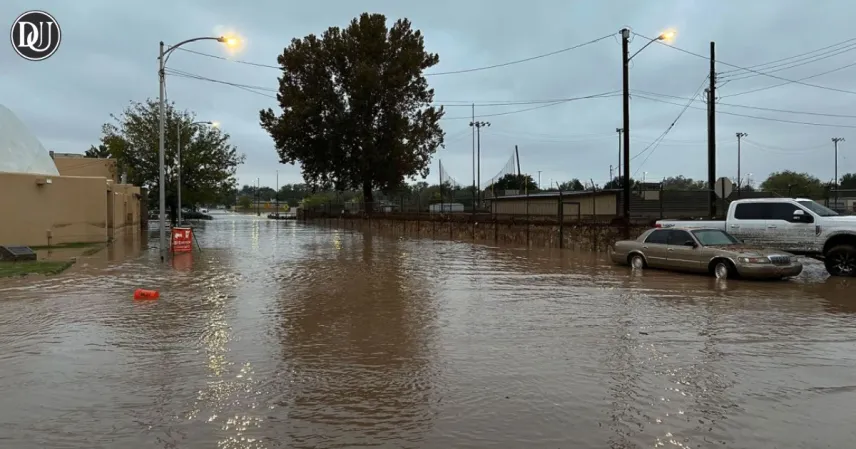A fast-moving flash flood hit Ruidoso, a mountain village in New Mexico, on July 8, causing widespread damage, multiple deaths, and the evacuation of hundreds. The new mexico flooding caught residents by surprise and triggered a full-scale emergency response from local and state authorities.
The village was still recovering from recent wildfires, and this unexpected flood now adds another layer of hardship for families already affected by natural disasters.
What Caused the Flash Flood?
The flooding was primarily caused by heavy rains falling over burn scars left by wildfires in the area. With vegetation destroyed, the soil could not absorb the sudden downpour. As a result, large volumes of rainwater quickly flowed downhill, leading to a sudden and intense flash flood.
The Rio Ruidoso overflowed rapidly, pushing water into roads, homes, and low-lying areas. Officials had issued flood alerts, but the speed of the event made evacuation difficult for many.
Death Toll and Missing Persons
Two people have been confirmed dead in the new mexico flooding. One body was found inside a submerged vehicle, while the second was discovered along the river downstream. Authorities are also investigating reports of missing individuals. Search and rescue efforts are ongoing with support from helicopters, drones, and K-9 units.
Large-Scale Evacuations
Emergency teams worked throughout the night to evacuate residents from dangerous zones. Buses and emergency vehicles helped transport the elderly and those without transportation. Several hundred people were moved to temporary shelters in nearby towns.
Officials continue to urge residents to avoid floodwaters and stay off roads unless absolutely necessary. Dozens of roads are either underwater or washed out.
Damage to Homes and Infrastructure
The new mexico flooding caused massive destruction to homes, roads, and public infrastructure. Entire blocks were inundated, vehicles overturned, and several structures were swept off their foundations. Bridges were washed away, and water supply lines were compromised.
Many homes are without power, and several neighborhoods remain inaccessible due to debris and washed-out roadways. Crews are working around the clock to restore basic utilities.
Water Contamination and Health Risks
Floodwaters have likely contaminated the local water supply. Public health officials have advised all residents in affected areas to avoid drinking tap water. Boil water advisories are in place, and bottled water is being distributed at emergency shelters.
Additionally, the flood brought with it debris from the wildfire zones, including ash, soil, and chemical residue, which increases the risk of infections and respiratory issues.
State Response and Support
Governor Michelle Lujan Grisham declared a state of emergency, enabling quick access to disaster relief funds and resources. National Guard personnel were deployed to assist with evacuations, road clearance, and rescue operations.
Related Article: Deadly Texas Flooding Flash Flood Camp Mystic Updates
FEMA has been notified and is expected to support the ongoing recovery efforts in coordination with state and local officials.
Community Resilience and Volunteer Efforts
Despite the tragedy, the community has come together to help each other. Local volunteers and non-profit groups have been distributing food, water, clothing, and hygiene kits to those affected. Many residents have opened their homes to evacuees and are helping with cleanup.
Churches, schools, and community centers have been turned into shelters. Mental health professionals are also on hand to assist those coping with trauma and loss.
Ongoing Weather Threats
The National Weather Service has warned of more rain in the coming days. Given the already saturated and burned land, even light rainfall could lead to additional flash floods. Residents are being asked to remain alert and follow official updates.
Outlook for Recovery
Recovery from the new mexico flooding will take weeks, if not months. Authorities are prioritizing rescue and cleanup, followed by restoration of infrastructure and long-term housing solutions. Insurance agents and government aid workers are expected to begin assessments soon.
While the rain has stopped for now, the full scope of the damage is still being uncovered. However, strong community bonds and timely emergency responses have helped prevent a larger catastrophe.










